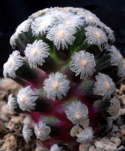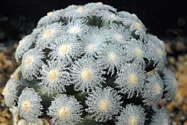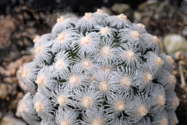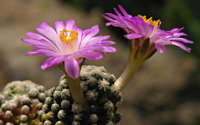Usually solitary or sparingly clustered in nature, plants in cultivation may eventually form clusters of dozens of heads but the thick roots require excellent drainage and careful watering to achieve this result. However, even solitary plants are charming with their upright, soft, balloon-like stems. During winter dormancy the stems can blush a deep reddish color though this is usually obscured by the feathery spine clusters atop the elongate tubercles. Related to the similarly dwarf-stemmed M. saboae, the flowers of M. theresae are showier, darker magenta, rather than pink, with a brush of yellow-tipped stamens in the center. The species is also more southerly in distribution, hailing from the Mexican state of Durango, rather than the Chihauhuan distribution of the rest of the M. saboae complex. HBG 119758, plants grown from seed and therefore displaying some subtle variation in color of the stems and the pubescence of the spination. $7.
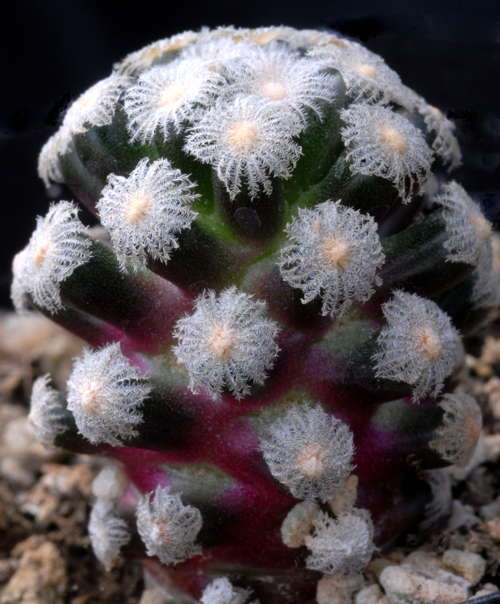
Published in the Cactus and Succulent Journal, Vol. 86 (2), March - April, 2014
